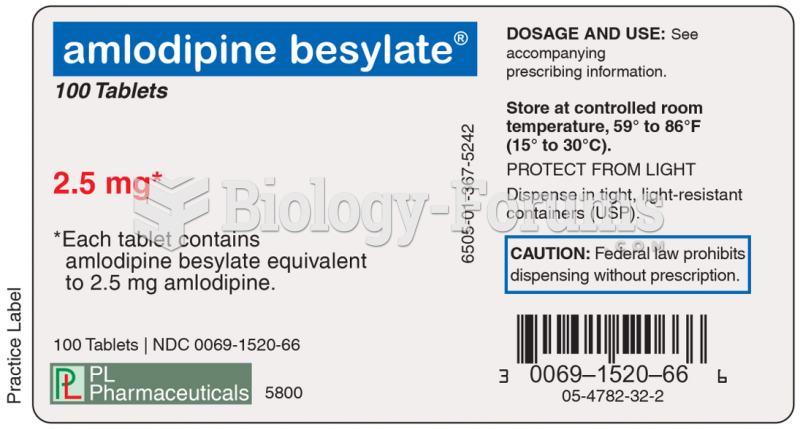Answer to Question 1
Correct Answer: 4
Rationale 1: One tablet orally four times per day is incorrect because bid is the medical abbreviation for twice per day and qid would be the abbreviation for four times per day. The Norvasc has been ordered as one tablet orally twice per day.
Rationale 2: One tablet orally three times per day is incorrect because the medical abbreviation for three times per day is tid and the order is for bid, which is twice per day.
Rationale 3: One tablet orally once per day is incorrect because once per day would be written as qd and bid is the medical abbreviation for twice per day.
Rationale 4: One tablet orally once per day is the correct interpretation of the physician's order.
Global Rationale: One tablet orally once per day is the correct interpretation of the physician's order. One tablet orally four times per day is incorrect because bid is the medical abbreviation for twice per day and qid would be the abbreviation for four times per day. The Norvasc has been ordered as one tablet orally twice per day. One tablet orally three times per day is incorrect because the medical abbreviation for three times per day is tid and the order is for bid which is twice per day. One tablet orally once per day is incorrect because once per day would be written as qd and bid is the medical abbreviation for twice per day.
Answer to Question 2
Correct Answer: 3
Rationale 1: Subcutaneous three times per day is incorrect because sublingual three times per day is the correct interpretation of this order. A medication ordered subcutaneous would be SQ.
Rationale 2: Subcutaneous four times per day is incorrect because sublingual three times per day is the correct interpretation of this order. A medication ordered subcutaneous would be SQ.
Rationale 3: Sublingual three times per day is the correct interpretation of this order.
Rationale 4: Sublingual four times per day is incorrect because sublingual three times per day is the correct interpretation of this order. A medication ordered four times per day would be qid.
Global Rationale: Sublingual three times per day is the correct interpretation of this order. Subcutaneous three times per day is incorrect because sublingual three times per day is the correct interpretation of this order. A medication ordered subcutaneous would be SQ. Subcutaneous four times per day is incorrect because sublingual three times per day is the correct interpretation of this order. A medication ordered subcutaneous would be SQ. Sublingual four times per day is incorrect because sublingual three times per day is the correct interpretation of this order. A medication ordered four times per day would be qid.







